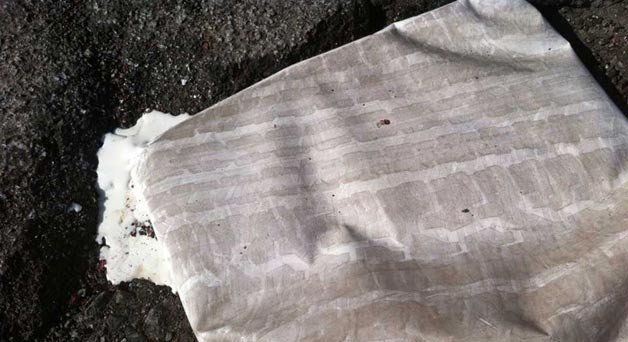Students at Cleveland's Case Western Reserve University may have the answer. In April, the team took first prize in a competition sponsored by Saint-Gobain, a global materials company. The goal was to use simple materials for an out-of-the-box product.
"We were like, what's a common, everyday problem all around the world that everybody hates?" said team member Curtis Obert, explaining how they decided to tackle potholes. Obert and four of his classmates figured the best way to solve the problem of potholes is to fill them with a fluid.
Wait, doesn't that just make a puddle? Not when you use a non-Newtonian fluid. Newtonian fluids are always runny, while non-Newtonian fluids behave differently in response to shear. This is why a kevlar bag filled with "oobleck," a non-toxic goop, won the prize. Oobleck is shear-thickening; sudden application of force causes the fluid to behave like a solid, supporting the weight of an automobile as a wheel rolls over it. Otherwise oobleck acts like you'd expect a bag of water to behave, conforming to the contours of the pothole and presenting a level surface.
The solution has been road-tested, though more actual winter testing is needed, and the cost upfront may not be any cheaper initially than traditional repair methods. The bags are faster, more portable and reusable, so long-term cost savings are there. Instead of waiting for the road crew, a police officer who rattles his cruiser through a divot can pull a bag out of the trunk and temporarily fix the issue with a solution that's biodegradable. While there's more work to be done, several companies are naturally interested in this elegant and potentially revolutionary solution.
Nouvelles connexes



